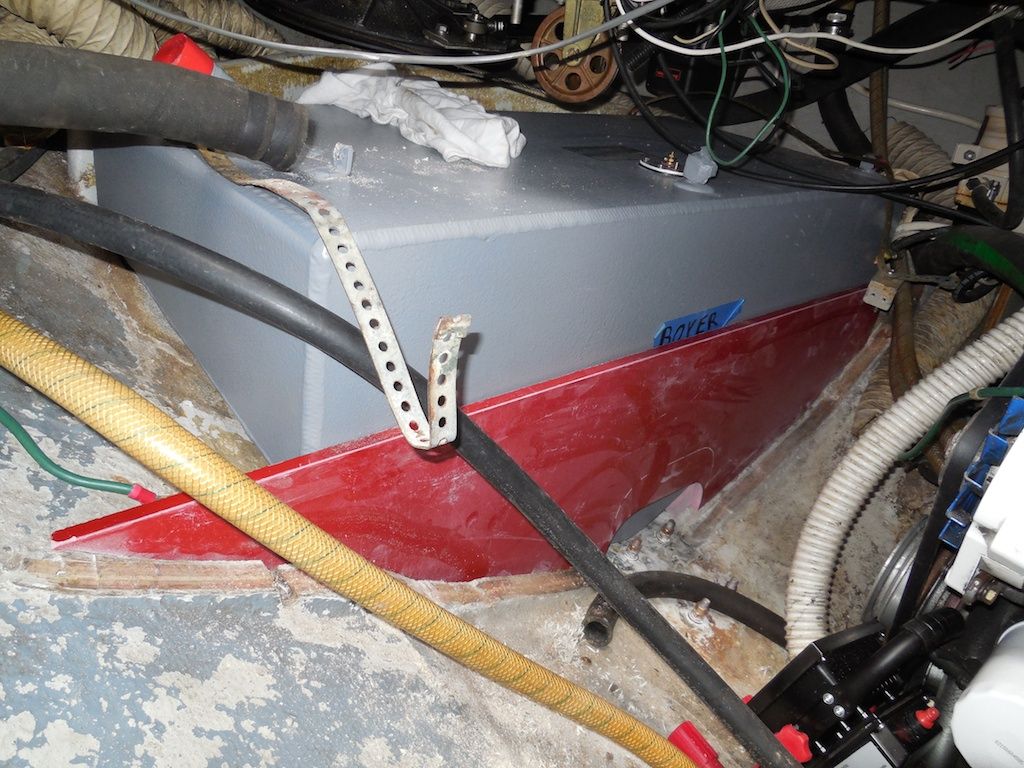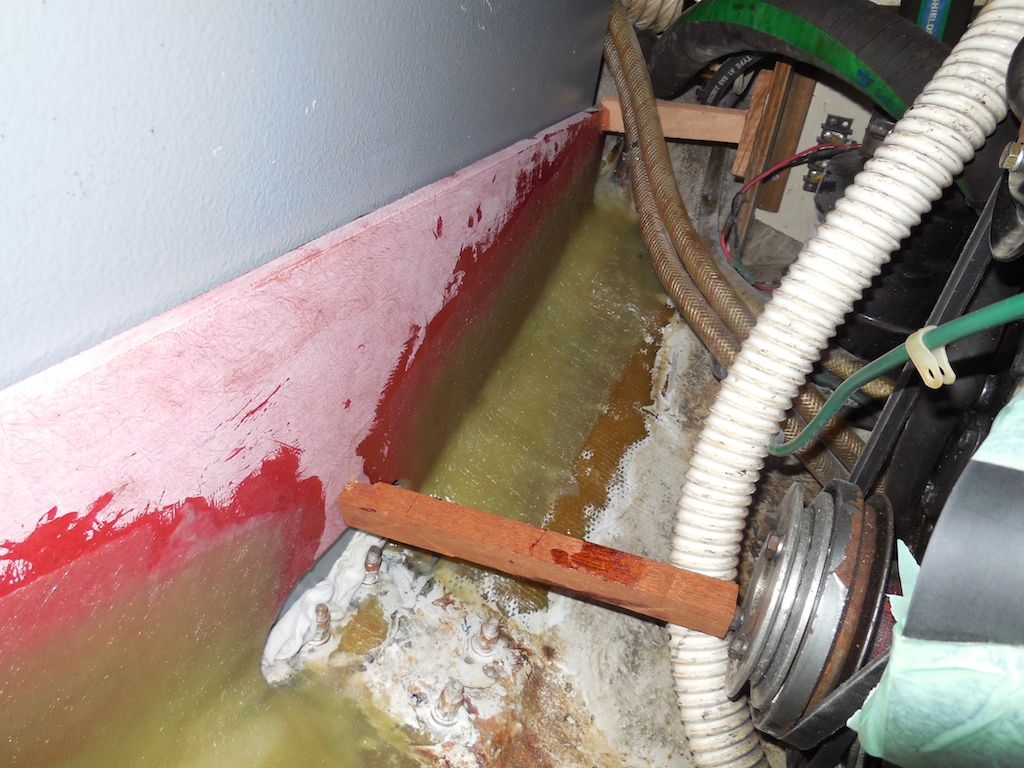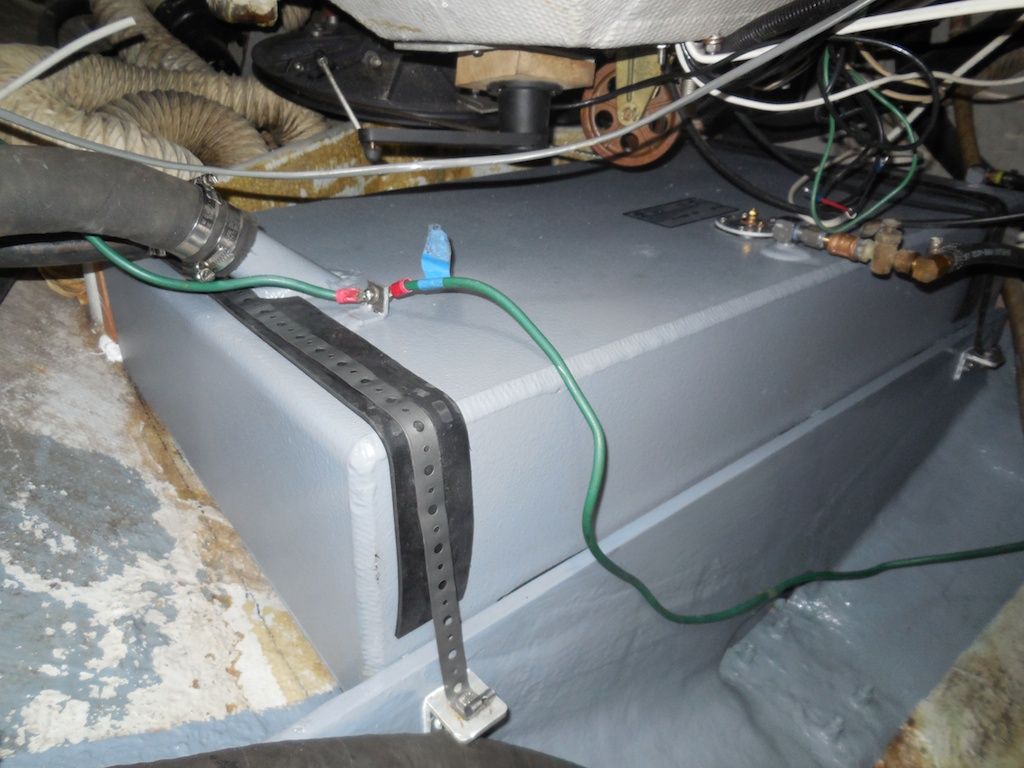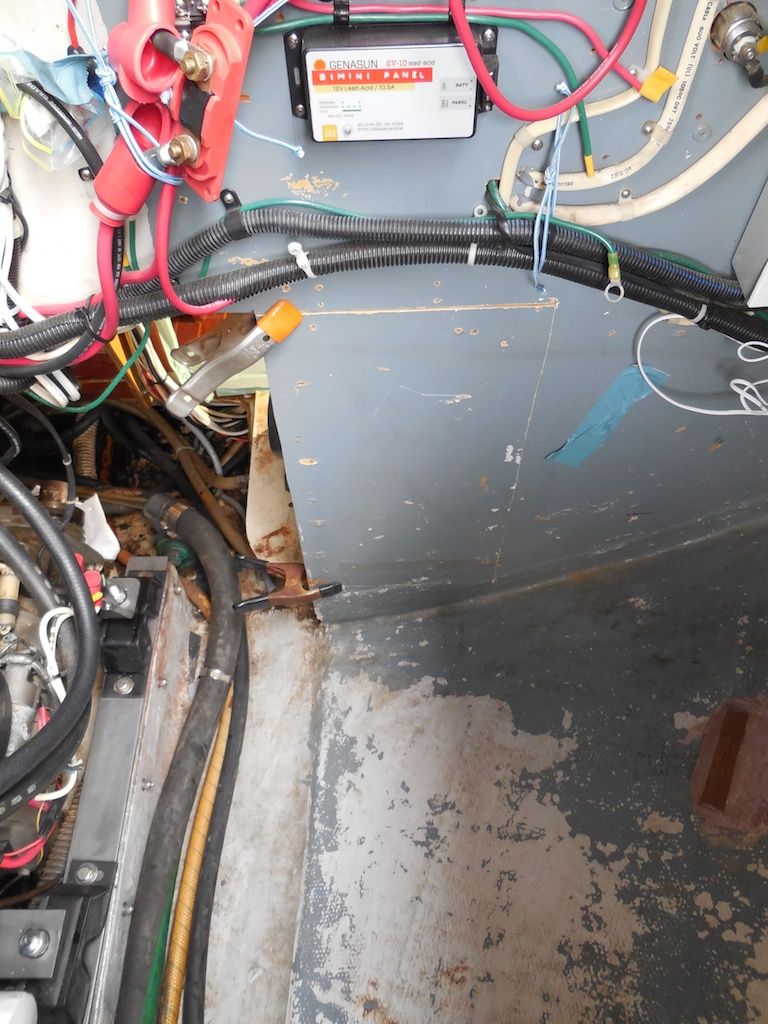Finally, the New Fuel Tank is in Place!
--Blog post written by Bob
We are definitely not using foam to support the new tank! Because we are not using foam, the tank compartment can be made a little shorter--so, we can move the new tank bulkhead aft about two inches so that the two of the strut bolts are no longer inside the fuel tank compartment.
 |
| The cut-to-size pre-manufactured fiberglas sheet (red) is simply siting in place in this photo. Note the base of the old bulkhead--this was completely ground off prior to fastening the new bulkhead. |
Rather than use a "glassed over" plywood bulkhead like the original, it was easier to make a new bulkhead from 1/2-inch thick pre-manufactured Fiberglas sheet. We decided that the bulkhead was not structural and that it didn't have to be secured to the hull in the same rigid manner as the original bulkhead (since this would be impossible anyway because of the lack of access to the tank side of the bulkhead). The following photo shows the new bulkhead (red color) sitting in place before being fastened to the hull. Wedges were constructed to fit under the tank for support--these were also made from pre-manufactured Fiberglas sheet and are located just aft of the new bulkhead.
 |
| New tank bulkhead blocked in place while epoxy cures. The new tan is permanently in place at this point. |
Following the final positioning of the new fuel tank, the new tank bulkhead was glassed into place. Even though it's 15 degrees (F) outside, work is progressing pretty well. The temperature in the area is being controlled using heat lamps so that the Fiberglas (used to fasten the new bulkhead) can cure properly. All this work was performed while the boat was on the travel lift.
 |
| The new fuel tank is completely installed. Note the rubber straps between the stainless steel straps and the aluminum tank. |
The raw fiberglass that connects the new tank bulkhead to the hull, the new bulkhead, and the new strut bolts were coated with gray gelcoat to match the color of the tank. This was a nice finishing touch by the boatyard.
The remainder of the work to be done is primarily reconstruction of the section of bulkhead which had to be removed for the tank installation and reinstallation of the engine raw water strainer, water heater, and other small items. The job is almost done!
 |
| The removed section of bulkhead is clamped in place as a temporary fit up procedure prior to reinstallation. |
The starboard cockpit drain hose had to be removed for the installation of the new fuel tank. It showed signs of aging (external surface cracks)--so, it was replaced with new hose. (I will replace the port cockpit drain hose in the spring when I replace all the plastic drain fittings. This is very important since the discharge of these drains is below the waterline. If one of these hoses fails, the boat could sink.)
I hope this post doesn't sound overly technical. I'm very happy that progress is being made. We are now contemplating the installation of a composting toilet and the removal of the existing marine toilet, holding tank, and all associated piping. Not only is this an environmentally sound move but it frees up some much needed storage space. More on this in the spring…
Thanks for following our blog!
No comments:
Post a Comment